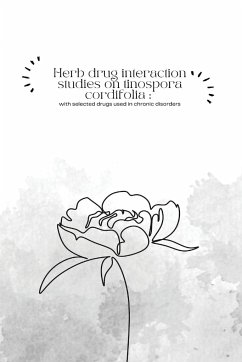Herbal medicines are now widely used by patients worldwide to treat a wide range of conditions (particularly chronic illnesses that necessitate long-term care) in addition to traditional allopathic drugs. This increases the risk of herb-drug interactions (HDIs), which can have additive, synergistic and antagonistic effects, sometimes resulting in catastrophic clinical outcomes (Fugh-Berman & Ernst, 2001; Hu et al., 2005; Posadzki Watson & Ernst, 2013). Cytochrome P450 (CYP450)-mediated inhibition or induction, as well as transport and efflux proteins are among the key routes postulated for HDIs (Shaikh, Thomas & Chitlange, 2020). Due to the complexity of the herbs used and their ability to modulate multiple targets, the study of HDIs remains a major problem when compared to reporting of drug-drug interactions (Tsai, Lin, Simon Pickard, Tsai & Mahady, 2012; Wills, Bone & Morgan, 2000; Brant-








